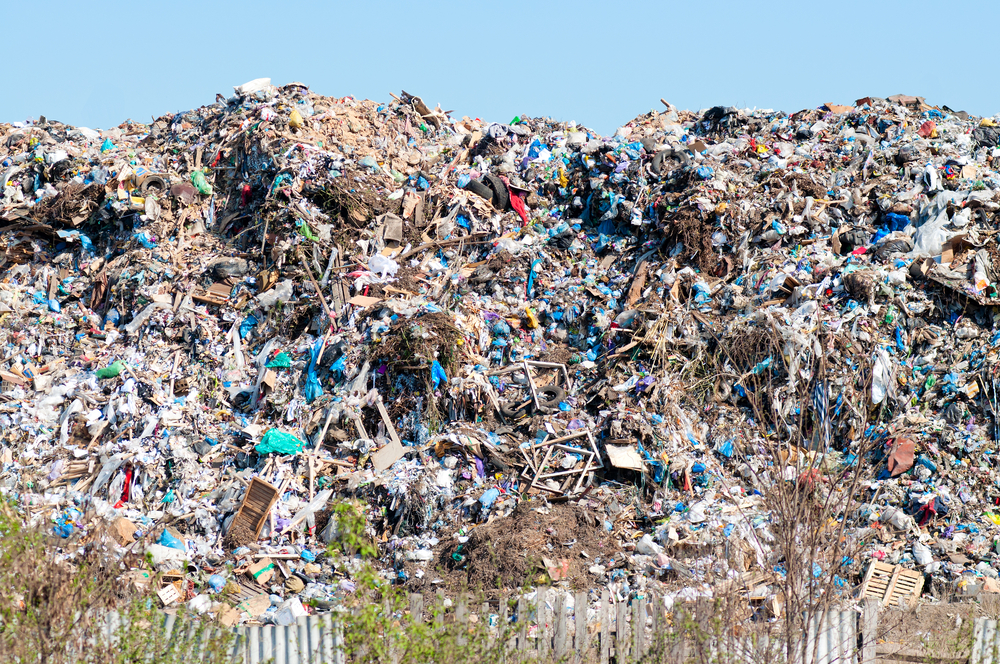
SAN FRANCISCO — Humans drive trillions of miles in cars, clear-cut forests for agriculture and create vast landfills teeming with tin cans, soda bottles and other detritus of industrialization. There's no doubt that humans have radically reshaped the planet, and those changes leave traces in the Earth's geological record.
At the annual meeting of the American Geophysical Union this week, geologists are grappling with how to define the boundaries of that human-centered geologic era, referred to as the Anthropocene. Despite our dramatic impact on the planet, defining our era has proven a difficult task.
"If it's to be a geological period, it has to be visible in the geological record," said Anthony Brown, a researcher at the University of Southampton in the United Kingdom, who is trying to define the boundary.
Because geology looks at the deep past, such questions would normally be examined in 100,000, even 1 million years' time, he said.
"In the absence of time travel, we have to work out whether we really do have enough around to define a new geological period."
Shifting boundary
In one possible way of demarcating the boundary between natural geologic eras and the human-shaped period, scientists would look at how agriculture changes sediments, Brown told LiveScience.
Sign up for the Live Science daily newsletter now
Get the world’s most fascinating discoveries delivered straight to your inbox.
For instance, when farmers clear-cut forests and plant crops, they change how sediments and runoff wash into the local rivers, often creating a thick layer of silty, sandy clay on the flood plain, Brown said. [Top 10 Ways to Destroy Earth]
But using such geologic clues to date the Anthropocene era runs into a problem: agriculture began at different times around the globe. Some areas, such as certain pockets in Africa, may not have had intensive agriculture until recently.
Alternatively chemical deposits could date the boundary between human and natural geologic eras. For instance, widespread use of leaded gasoline and paint has left high levels of lead in soils throughout the world, said Michael Kruge, a researcher at Montclair State University in New Jersey. Polycyclic aromatic hydrocarbons (PAH) could also serve as markers. These are formed from combustion in natural wildfires, but also come largely from the burning of fossil fuels.
"In the middle of the 20th century, you see a big spike in these compounds in sediment," Kruge said in a press conference.
Using those measures, the Anthropocene era would begin around industrialization, thousands of years after humans began reshaping the planet with agriculture.
Yet another proposal would peg the time of the Anthropocene's birth to the mass movement of soil, or the accumulation of minerals from coal burning, cement production for construction, or the massive use of nitrogen fertilizers. That would date the Anthropocene to the sharp uptick in the production of these chemicals after World War II.
Other scientists hope to date the Anthropocene's onset using modern-day fossils, for instance, layers and layers of plastic soda bottles and tin cans piling up in landfills.
All of these approaches face a challenge, however: combining human-caused changes with natural, global variations that normally demarcate different geologic time periods. For instance, our current geologic time period, the Holocene Epoch, governs our climate and the extent of our glaciers, and is dictated by eccentricities in the Earth's orbit (something humans' haven't yet managed to alter). Since the Earth's orbit isn't going to change any time soon, the Anthropocene would somehow need to overlap with the Holocene.
"Nobody believes that the astronomical cycle, the 100,000-year cycle that we're in, is suddenly coming to an end," Brown said. "We have to combine the anthropogenic with the natural variability in the climate system. It is a question that geologists never had to face before."
Follow LiveScience on Twitter @livescience. We're also on Facebook & Google+.

Tia is the managing editor and was previously a senior writer for Live Science. Her work has appeared in Scientific American, Wired.com and other outlets. She holds a master's degree in bioengineering from the University of Washington, a graduate certificate in science writing from UC Santa Cruz and a bachelor's degree in mechanical engineering from the University of Texas at Austin. Tia was part of a team at the Milwaukee Journal Sentinel that published the Empty Cradles series on preterm births, which won multiple awards, including the 2012 Casey Medal for Meritorious Journalism.









